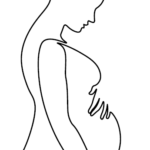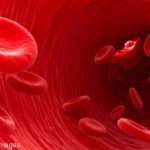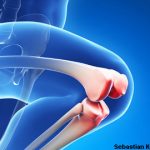A study was able to quantify the transference of tumor necrosis factor (TNF) inhibitors from mother to fetus during pregnancy. Overall, the researchers found low levels of transfer for the treatments studied.

Subcategories:Clinical Criteria/GuidelinesEthicsLegal UpdatesLegislation & AdvocacyMeeting ReportsResearch Rheum
The ACR/CHEST ILD Guidelines in Practice, a video
In collaboration with the American College of Chest Physicians, the ACR released two new comprehensive guidelines aimed at improving the screening, monitoring, and treatment of patients with interstitial lung disease (ILD) secondary to systemic autoimmune rheumatic diseases (SARDs). Recently, Sindhu R. Johnson, MD, PhD, professor of medicine at the University of Toronto, Canada, director of the Toronto Scleroderma Program and principal investigator for the guideline, and Elana J. Bernstein, MD, MSc, Florence Irving associate professor of medicine in the Division of Rheumatology at Columbia University, New York City, and co-first author, presented a webinar to talk about how the guidelines were developed and present some of the recommendations and their rationale: Watch the recording now!

University of Chicago Medicine: Lauren He, MD; & Cuoghi Edens, MD |
A study was able to quantify the transference of tumor necrosis factor (TNF) inhibitors from mother to fetus during pregnancy. Overall, the researchers found low levels of transfer for the treatments studied.

Duke University Rheumatology Fellowship Program: Catherine Sims, MD; Sonali Bracken, MD, PhD; Megan Milne, MD; Nathaniel Harris, MD, PhD; Poorva Apte, MD; Lena Eder, MD; Lisa Criscione-Schreiber, MD, Med; Megan Clowse, MD; & David Leverenz, MD |
Rheumatologists play a critical role in the reproductive health of their patients, but only half of rheumatologists currently ask their patients about reproductive health or family planning issues. A new guideline seeks to change that.

Treatment with denosumab for patients with RA and glucocorticoid-induced osteoporosis led to greater increases in bone mineral density of the lumbar spine and hips of patients than treatment with risedronate.

In March A&R, Remaeus et al. reported on the results of their study, which evaluated pregnancy outcomes in relation to anti-rheumatic treatment before and during pregnancy, as a proxy of disease severity in pregnant women with psoriatic arthritis (PsA), compared with those without PsA.

Medical University of South Carolina Rheumatology Fellowship Program: Sean Carter, MD; Jessica English, MD; Brad Collins, DO; Ana Tucker, MD; Jen Schmidt, MD; Whitney Elg-Salsman, DO; & Faye Hant, DO |
With both impressive sensitivity and specificity in capturing active large vessel vasculitis, a positron emission tomography (PET) scan is a potential tool for determining disease activity and predicting relapse in patients with large vessel vasculitis.

MedStar Georgetown Washington Hospital Center: Leen Al Saleh, MD; Ajita Acharya, MD; Elena Obreja, MD; & Akrithi U. Garren, MD |
Research has found dual-energy computed tomography (DECT) may be a non-invasive and cost-effective option to help rheumatologists more accurately diagnose gout.

Cleveland Clinic Foundation Rheumatology Fellowship Program: Saja Almaaitah, MD; Shashank Cheemalavagu, MD; Rupal Shastri, MD; Perry Fuchs, MD; Melany Gonzalez Orta, MD; & James Vondenberg, DO |
As the capabilities of machine learning and artificial intelligence improve, rheumatologists have access to more data than ever, which may enable them to better predict which patients will respond to specific treatments, such as tumor necrosis factor inhibitors.

The Children’s Hospital at Montefiore Pediatric Rheumatology Fellowship Program: Alisha Akinsete, MD; Malki Peskin, MD; & Jessica Perfetto, MD |
Machine learning is a tool that may help pediatric rheumatologists distinguish between different subtypes of juvenile idiopathic arthritis (JIA) and predict treatment response.

Ohio State University Rheumatology Fellowship Program: Nina Couette, DO; Jesse Reisner, DO; & Sheryl Mascarenhas, MD, Fellowship Program Director |
Editor’s note: RheumMadness is the place for everyone crazy about rheumatology to connect, collaborate, compete and learn together. During RheumMadness, rheumatology concepts represent teams that compete against each other in a tournament, much like basketball teams do in the NCAA’s March Madness tournament. In a series for The Rheumatologist, readers will get a chance to…

University of Texas Southwestern Rheumatology Fellowship Program: Kubra Bugdayli, MD; Brett Capel, MD; Yusuf Chao, MD; Melissa DeFoe, MD; Daniel Emesiani, MD; Joad Eseddi, MD; Nagendra Pokala, MD; Komal Patel, MD; Bonnie Bermas, MD; Haidy Galous, MD; Andreas Reimold, MD; & Guillermo Andres Quiceno, MD |
Dalmatians have defects in the renal tubular reabsorption of filtered urate and the hepatic conversion of uric acid to allantoin that may provide unique insights into uric acid homeostasis, with implications for the treatment and management of gout.